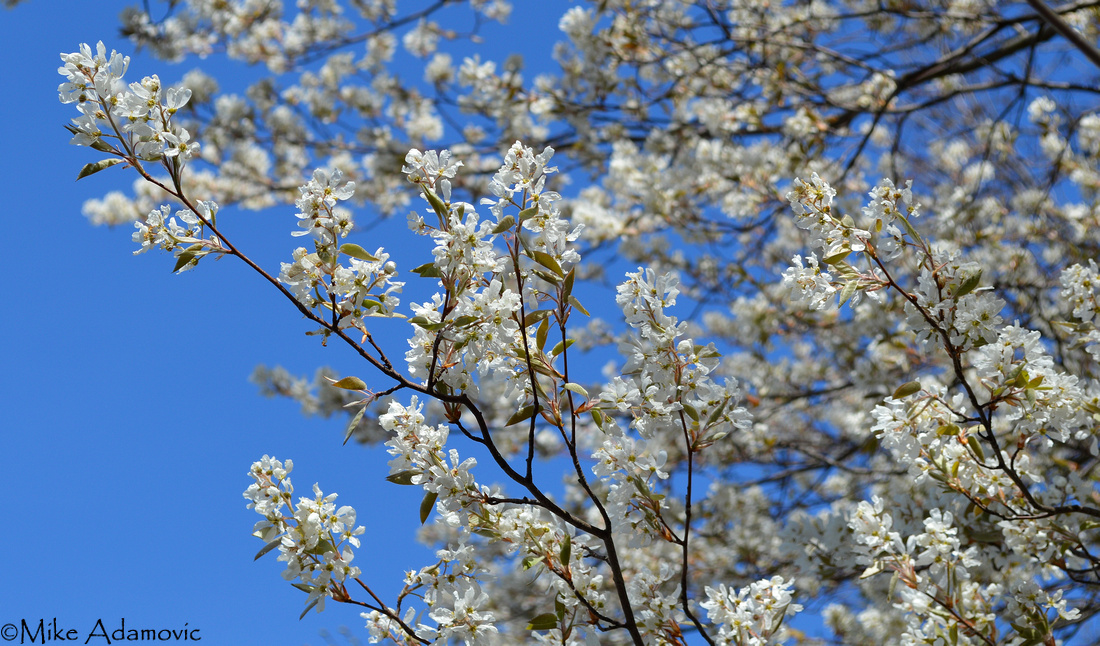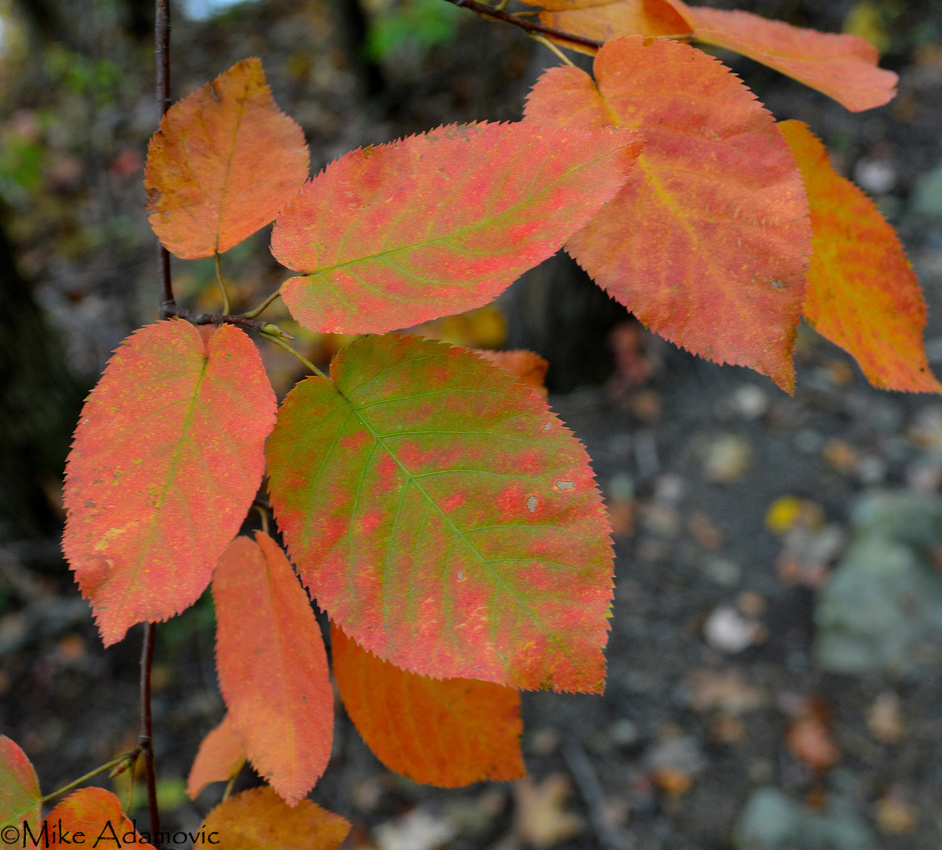The Blooming of the Shadbush


After the cold of winter has subsided and the earth has had a chance to slowly warm for several weeks, shadbush, also known as serviceberry, illuminates the grayness of the torpid and bleak forests of the region by producing an explosive array of cream-white flowers in late April. While some of the notable spring ephemeral wildflowers nestled among the shifting leaves and detritus of forest floor make an earlier appearance, they may not be noticed until practically stepped on. In contrast, this tree which rises in height to 10-25 feet is sure to be seen, even at a considerable distance. Its billowing puffy floral clusters draw the eye the same as a lone cloud piercing the azure monotony of the sky.
Shadbush is so-called by the use it served to Native Americans. The highly visible and well distributed tree served as an important temporal marker. Its blooming coincides with the yearly spring arrival of shad in regional estuaries. These fish were a vital staple to the Indians’ diet, having consumed most of their winter food reserves by the time of shad’s return. The resilient wood was also supposedly used for making arrow shafts.
Serviceberry, another popular name, has a more depressing derivation. The bloom date of the tree indicated to settlers of New England that the ground was sufficiently thawed to allow for grave digging to commence for the deceased who had passed during the winter, whereby burial “services” could finally be conducted.


A month after the trees have produced the last flowers, a tasty and handsome fruit not unlike the blueberries which can often be found sprouting copiously from the understory beneath in many cases, appear in dense, drooping clusters. Berries tend to ripen toward the end of June, giving way to yet another name, Juneberry. Thoreau was rather fond of collecting the rather obscure fruit, and pronounced “them a delicious berry, nearly equal to blueberries and huckleberries,” further adding, “they are perhaps the sweetest bush berry, and they need only to be more abundant to be generally appreciated.” Many local Indian tribes utilized the berries in a variety of ways. Apart from drying and storing them for winter use, fresh berries would be crushed and added with nuts, fat, and meat to create an energy and protein rich pemmican. There are a number of medicinal uses recorded as well, ranging from ameliorating liver ailments to treating constipation.
Several different shadbush species are native to the Northeast, garnering such names as downy, mountain, and lovely shadbush, among numerous others. Many varieties are quite similar, and have a propensity to interbreed when clumped together. The tendency for hybrid versions to emerge oftentimes makes a concrete identification difficult, stumping even the most astute botanist. For the casual observer who has little interest in delving into taxonomic complexities, the generic “shadbush” suffices.
In October, the tree once more becomes breathtakingly beautiful, though a glance this time may bring about feelings more reflective than jubilant. Instead of its showy blossoms forecasting countless warm, sunny days ahead, filled with a promise of a myriad of multi-hued wildflowers and summer verdure, inflamed autumnal leaves rather portend a dip in seasonal fortune, marked by pressing cold and uniformity. The fiery appearance of the shadbush, which directly echoes a bonfire in both color and visual intensity, encourages the viewer to prepare and stock up on fuel for the coming winter.


Though shadbush is a pretty tree to admire while among the woods, its reverence has come about more by the utilitarian use it serves. Whether informing of the arrival of shad, or the proper time to begin burial services, or simply providing a sweet treat or durable wood, this tree is always there to lend a hand. With this in mind, it’s easy to see why it has been held in such high esteem since the early days of humanity.